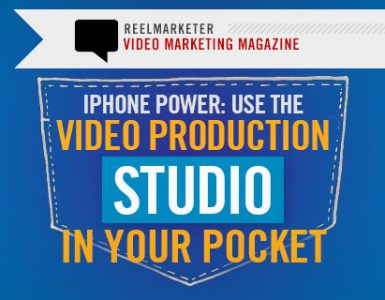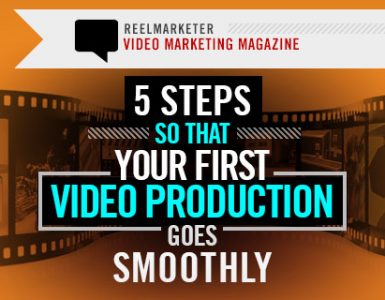As video continues to overwhelm the written word in getting across information of all kinds, organizations are busy brainstorming creative ways of using this media. I thought it would be useful to write a series sharing a production-concept-a-week. Here is today’s:
Every company has tailored messages to convey as well as a range of target audiences to whom to convey them. When different types of video messages are conceptualized in advance of recording, a number of relevant interviews and images can be compressed into fewer days on the field (and thus reduced costs), yielding several video end products.
For example, if a company holds a widely attended event for its customers or for its membership, the occasion cries out for a professional video team – but only secondarily to capture the purpose of the gathering. Most significantly, the event provides a wealth of opportunities to secure interviews with many key individuals who can delve into points important to the company’s marketing efforts, all of whom are in one place at one time.

Testimonials in the form of video interviews emit a kind of genuineness that eclipse even the best-worded written recommendations about a company and/or its products or services, and by speaking to the experiences of the interviewees, the videos become invaluable marketing tools. If the production team spends the day pulling aside a spectrum of customers or members from different industries or geographies or whatever other diversities are present at the meeting, and if interviews are conducted with a level of depth and comprehension of the subject, enough raw material will exist to edit numerous video web clips. Since each will confirm from a different perspective a uniform message about the prime company, the totality of video – to reiterate, recorded in a single day — becomes invaluable.
Of course, videotaping is only one expense of the production. To make the interviewees sound most articulate, the editor should excise all the “um”s and “you know”s and “like”s and other speech impediments, but all those cuts require covering or other transition devices. A few fades are okay, but too many look sloppy – so even these mini-productions are likely to require some b-roll shots.

That goes to my use of the word “secondarily” above – not that capturing some contextual visuals are off the checklist, just that they take second place to getting the good, unique opportunity sound bites. In videos like this, some sparse shots will need to be streeeeeetched, which is a much better alternative than repeating them. Another option is to arrange a two-camera shoot, with the second cameraperson more focused on b-roll, but that requires a bigger budget both for shooting and editing.
In the post-production phase, editing short video web clips is not overly time consuming, especially when the b-roll shots are limited and graphics are often mostly or completely nixed for minimal budget solutions. Nonetheless, the collective job – editing many short videos that can be produced from the material shot – can take time.
As a recap, some steps that marketers should take when organizing sizeable customer or membership events include:
- Have a video production crew present and set up in a quiet room near the event space to interview a number of pre-designated people individually
- Ensure that questions that are being asked go to an array of substantive issues
- Try to leave some time for the crew to capture b-roll of the meeting, breakout sessions, networking opportunities, etc.
- From the video recorded of customers, have a number of very short, single-spokesperson testimonial sound bites edited and posted on the web and on social media sites.
- From the video recorded of folks other than customers, have a number of very short, single-spokesperson marketing-related sound bites edited and posted on the web and on social media sites.
Ask me your below in the comments, and check back next week for my next update!

The company can decide how many to have edited, then posted, immediately, and how many can await a future time, depending upon marketing and other present and upcoming strategies. At that later point, the video shoot and its concomitant cost is done (unless additional b-roll is desired), so the price should be relatively minimal and the content should be substantive, an end result which should be beneficial in SEO rankings.






I just read your other newer article Ellen and now just came across this one. How long should it take for a film crew to shoot 7-12 interviews with my staff/management personnel – what kind of time slot should i budget for when they’re in our building? I think I can set aside a board room for a day. MIght they need it longer than a day? How many interviews per day is average, give or take?
Hi Ernest
I do a lot of these over in the UK. Of course the time it takes depends a lot on how many questions you are going to ask however, from the clues in your question it doesn’t sound as through you are after quick sound-bite voxpop stuff. On that basis I think you need to allow around 20 – 30 mins per person. One day is easily enough. Allow time from crew to set up and have breaks but I have often covered 6 or so people as fairly in-depth interviews and still had plenty of time for B roll stuff too. Dont forget it often takes longer than just asking the question and getting the answer. Crew need to get each person set up, staff can be nervous and need time to settle, not all answers go right 1st time and might need a re-take or 2. Book 30 – 40 min slots per person and you should have plenty of time and space to work in.
Hi Ernest — and sorry I didn’t respond earlier — I just saw your question.
I generally agree with Duncan’s assessment. I think the time really depends on the nature of the individuals being interviewed and the substance of the comments they are making. Some folks are natural on camera — very articulate quite quickly; others get very nervous as soon as they see the professional equipment set-up. The latter need much more time.
With respect to content: If an interviewee is only speaking to a few minor issues, the time allotted need not be too long, perhaps no more than 20 minutes. But an executive, for instance, who is covering a number of topics so that several different videos can be created, might need up to two hours. In all cases, assume that the first five to ten minutes of the interview are throw-aways — time for the interviewee to relax and get used to the situation.
Keep in mind that there is no hard and fast rule. You need to consider the details of each shoot, then allocate time accordingly.